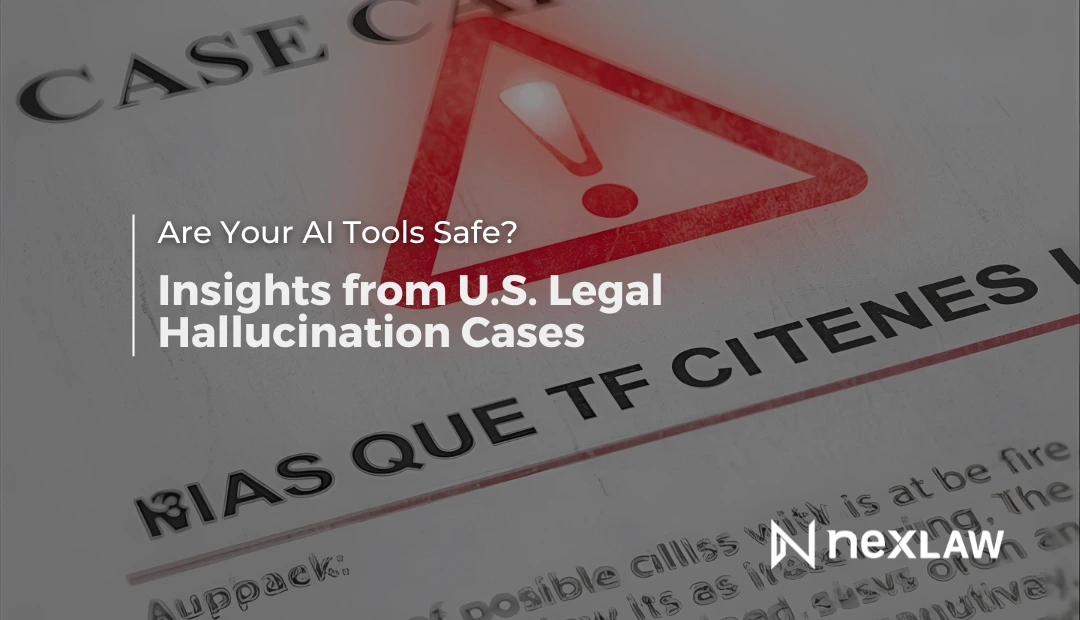Navigating the Shift: How UK Legal Professionals are Adapting to the End of the EU ODR Platform
An In-Depth Analysis of the ODR Platform’s Demise and the Future of Consumer Redress in the European Union
The European Union’s Online Dispute Resolution (ODR) platform, established in 2016 to facilitate online dispute resolution for consumers and traders, will permanently close on July 20, 2025, due to low usage and high maintenance costs as outlined in Regulation (EU) 2024/3228; until then the ODR link must be displayed, but afterward all references should be removed with traders needing to focus on national ADR and potentially tools like Nexlaw.ai, while consumers will rely on national bodies and a forthcoming EU digital guidance tool for dispute resolution.
Unlock Legal Insights Instantly
Genesis and Aims: The ODR Platform’s Initial Mandate
Launched in 2016, the ODR platform was envisioned as a unified digital portal, enabling consumers and traders across the EU to resolve disputes without the costs and complexities of traditional court proceedings. A key feature of the initiative required online traders and marketplaces targeting EU consumers to prominently display a direct link to the ODR platform. This measure aimed to enhance transparency, provide easy access to certified ADR providers, and build greater consumer confidence in the growing digital single market by offering a clear pathway for grievance resolution.
Deconstructing the Discontinuation: Why the ODR Platform Failed to Thrive
Despite attracting 2 to 3 million visitors annually, the ODR platform struggled to convert this traffic into meaningful dispute resolutions. Only a small fraction of users filed complaints and an alarming 2% of these resulted in positive outcomes for consumers, approximately 200 successful cases per year across the EU. Combined with the high costs of maintaining its multilingual infrastructure, technical operations and administration, the platform’s lack of effectiveness led the Council of the European Union to conclude that its performance did not justify the substantial resources allocated to its upkeep.
Key Factors Undermining the ODR Platform’s Success
| Factor | Description | Impact on Effectiveness |
|---|---|---|
| Limited User Engagement | Despite high website traffic, few users filed complaints. | Left the platform underutilized and unable to serve its core function effectively. |
| Trader Unresponsiveness | Many businesses were reluctant to engage in ADR processes. | Undermined the platform’s ability to achieve successful resolutions and eroded consumer trust. |
| Process Complexity | The interface and procedures were seen as cumbersome. | Discouraged usage, particularly among less tech-savvy users, reducing overall adoption rates. |
| Cost Inefficiency | High costs of multilingual support, technical maintenance, and administration. | Raised concerns about resource allocation, given the platform’s limited success rate. |
| Lack of Enforcement | Weak mechanisms to ensure trader participation or adherence to ADR outcomes. | Diminished the platform’s authority and effectiveness in delivering results. |
| Fragmentation of ADR | Varying procedures and languages across national ADR bodies. | Complicated cross-border disputes, preventing a seamless solution for users. |
| Awareness Issues | Consumer awareness of the platform was relatively low in some regions. | Limited its reach and reduced its impact as a widely recognized dispute resolution tool. |
| Technological Limitations | Outdated infrastructure failed to meet evolving digital marketplace needs. | Contributed to user frustration and reduced relevance in modern commerce. |
| Lack of Proactive Features | Focused on reactive complaint handling rather than dispute prevention or early mediation. | Failed to address root causes or foster collaborative resolutions. |
| Integration Challenges | Difficulty aligning with diverse national legal and ADR systems. | Hindered efficient cross-border dispute processing. |
| Evolving Digital Landscape | Rapid advancements in consumer expectations outpaced the platform’s design and capabilities. | Made the platform less aligned with contemporary online dispute resolution needs. |
Navigating the Sunset: The ODR Platform’s Discontinuation Timeline
The timeline for the ODR platform’s closure is designed to ensure stakeholders can adapt to the changing regulatory environment:
| Critical Date | Event | Implications for Stakeholders |
|---|---|---|
| January 19, 2025 | Regulation (EU) 2024/3228 Enters into Force | Marks the start of the legal framework for the platform’s termination and its phased closure. |
| March 20, 2025 | Final Day for Submitting Complaints | Consumers must seek alternative ADR options after this date; traders won’t receive new complaints through the platform. |
| July 20, 2025 | Permanent Closure; Complete Data Deletion | The platform ceases operation, requiring traders to remove all links and references by this deadline. |
This structured roadmap provides stakeholders with clear deadlines, ample preparation time and an opportunity to adopt alternative dispute resolution strategies.
Implications for Traders: Regulatory Compliance and Practical Adjustments
The impending termination of the ODR platform necessitates specific and timely adjustments for online traders operating within the European Union. Until July 20, 2025, businesses engaged in online sales to EU consumers are still legally obligated to display a functional link to the ODR platform. However, after this definitive date, this requirement will be lifted and it will become mandatory for all traders to meticulously remove all references to the ODR platform from their online presence, including websites, terms and conditions and customer communications. Failure to comply with this post-closure obligation could lead to regulatory scrutiny.
Key Actions for Traders:
- Prior to July 20, 2025: Maintain mandatory ODR link display.
- After July 20, 2025: Diligently remove all ODR references from all online and offline materials. Update internal policies and inform relevant staff. Familiarize themselves with national ADR options. Consider leveraging legal tech solutions like Nexlaw.ai for efficient customer inquiry management and dispute resolution.
Implications for Consumers: Adapting to New Avenues for Redress
The closure of the ODR platform signifies the loss of a centralized EU-wide point of contact for initiating cross-border online consumer complaints. Post-July 2025, consumers will need to utilize alternative primarily national-level dispute resolution mechanisms.
Available Dispute Resolution Options for Consumers:
- National ADR Bodies: Continued access to national consumer protection authorities and ombudsman services.
- Direct Engagement with Traders: Remains a crucial first step.
- Consumer Organizations: Provide valuable advice and support.
- Legal Counsel: Essential for complex or high-value disputes.
The Evolving Landscape: EU Policy and the Future of ADR
Analyzing the ODR Platform’s Shortcomings
Despite its promise as a streamlined solution for cross-border online disputes, the ODR platform faced several interconnected challenges:
- Low User Conversion: While website traffic was high, few visitors filed complaints, revealing a disconnect between awareness and actual usage.
- Limited Trader Engagement: Many businesses showed reluctance or lacked incentives to engage in ADR processes, impeding the platform’s success.
- Usability Issues: The platform’s interface and procedures were not always intuitive, discouraging full engagement from both consumers and traders.
- Cost-Benefit Imbalance: High costs for maintaining multilingual support, technical stability and administration far outweighed the limited number of successful resolutions.
The Path Forward: A New Digital ADR Tool and Enhanced ADR Framework
This initiative aligns strategically with broader reforms to the Alternative Dispute Resolution (ADR) Directive, reflecting the EU’s commitment to improving efficiency, accessibility and effectiveness in dispute resolution mechanisms. Key anticipated enhancements to the ADR framework include:
- Enhanced Accessibility: Ensuring ADR tools are user-friendly and available to all consumers, regardless of digital literacy or geographical location.
- Improved Efficiency: Streamlining procedures to provide faster and more cost-effective dispute resolutions, minimizing burdens for both consumers and traders.
- Broader Scope of Application: Expanding the ADR Directive to encompass a wider range of online and offline transactions.
- Strengthened Enforcement Mechanisms: Introducing robust measures to ensure compliance with ADR outcomes and build trust in the system.
- Strategic Technology Integration: Leveraging innovative tools like NexLaw.ai to optimize dispute processes through capabilities such as systemic issue analysis, secure communication and data-driven settlement suggestions.
Details of these reforms and their implementation timeline are expected to be unveiled soon. Stakeholders should remain vigilant and adapt proactively to the changing landscape of dispute resolution within the EU.
Guiding Principles for Businesses in the Post-ODR Era
| Category | Recommendations |
|---|---|
| Immediate and Essential Actions | _ Audit Materials: Review all consumer-facing documents, including websites, terms and conditions, policies, and marketing materials to locate references to the ODR platform. _ Remove References: Plan and execute the removal of all ODR platform links and language by July 20, 2025. _ Team Updates: Inform relevant teams, such as customer service and legal departments, about the platform’s closure and their responsibilities. _ Monitor Regulations: Stay updated on EU announcements about the new digital ADR tool and adjust compliance strategies accordingly. |
| Long-Term Compliance Considerations | _ Avoid Penalties: Ensure all ODR references are removed post-July 2025 to avoid regulatory scrutiny and penalties. _ Adapt Policies: Update privacy policies, cookie notices and customer communication workflows to reflect the absence of the ODR platform and highlight alternative ADR options. |
Key Information for Consumers in a Changing Landscape
- Complaint Submission Deadline: No new complaints via ODR after March 20, 2025.
- Existing Cases: Will be processed until the platform’s closure on July 20, 2025.
- National ADR Availability: Remains a key avenue for dispute resolution.
- New EU Digital Tool: Expected to launch, offering personalized guidance
Stay Prepared with NexLaw.ai
If you’re unsure how the ODR platform’s closure affects your business or how to manage the transition, NexLaw.ai is here to help. Whether you’re a consumer advocacy group, a multinational e-commerce platform or a small trader updating your terms, NexLaw.ai simplifies the complex and empowers the complaint.
Explore our platform or contact us directly to learn how NexLaw.ai can guide you through the EU’s evolving dispute resolution landscape.






